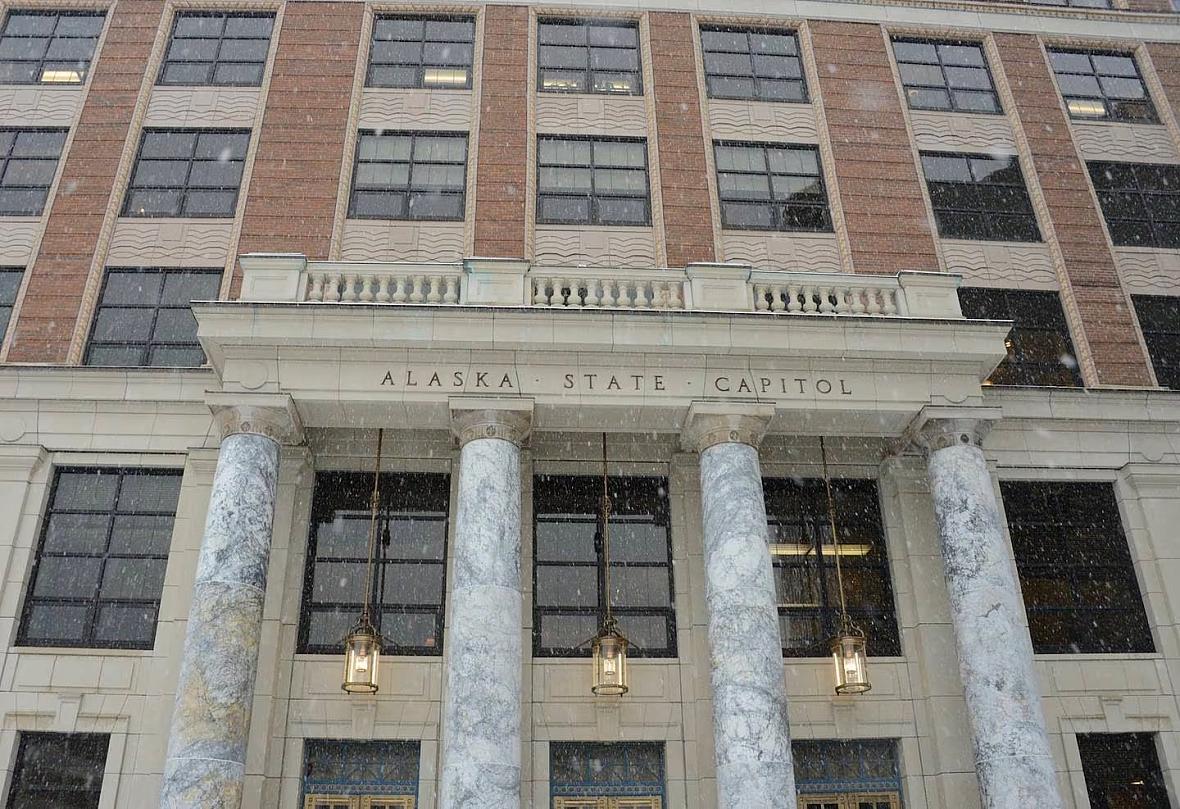Funding gap looms for Alaska’s domestic violence programs, but need for services is as high as ever
The story was originally published in Anchorage Daily News with support from our 2023 Domestic Violence Impact Fund.

Snow falls on the Alaska State Capitol on Monday, Jan. 30, 2023, in Juneau, Alaska.
Photo by James Brooks/Alaska Beacon
A major source of funding for Alaska’s domestic violence response has decreased significantly in the past five years, leaving a multimillion-dollar hole in the budget for services. That reduction, paired with the end of pandemic relief money and high rates of inflation, has domestic violence advocates scrambling to adequately fund the groups that keep one of the state’s most vulnerable populations safe.
Alaska’s Council on Domestic Violence and Sexual Assault, the group that manages state and federal funding for domestic violence programs and distributes them to communities, has plugged the hole with “gap funding” from state and federal sources, said former council Director Diane Casto.
She had been using COVID relief dollars to stabilize the budget, she said, but the council will have spent all that money by the end of this year.
“This is no longer just a gap. It’s a reality,” she said. “We either need to have more money for the ongoing years to have stable funding, or we’re going to need to decrease the amount of money we put out on the street.”
The problem has been years in the making.
What happened is this: One of the sources of federal funding for domestic violence programs, the Victims of Crime Act fund, increased significantly several years ago. The fund’s money comes from fines and fees that perpetrators of crime must pay, so it fluctuates. Alaska built out services to spend the influx of money in the 2022 fiscal year. Now, the fund has dropped and remains low, but the need for services has not diminished.
“So one year, we got almost $9 million of VOCA. Today, we’re getting around three,” Casto said.
In FY18, the state got nearly $8 million in VOCA funds. In FY21, it got less than half of that — less than $3 million.
That $5 million difference is a significant slice of the council’s financial pie. Last year, the council’s budget was nearly $25 million — of that, nearly $21 million went to grants.
Casto said the loss is exacerbated by inflation; while she is scrambling to keep funding stable, the costs of goods and services, especially in remote parts of the state, are going up. So she said what looks like stability is actually a loss.
“Even though we say — and it sounds really good: ‘They have steady funding, they’re getting the same amount they got last year’ — what that means is they’re getting cut every year, because the buying power for what they received in general fund dollars in 2017 is considerably less,” she said.
By her math, Casto has lost nearly a quarter of the buying power of her 2017 dollars. That means the council needs $2.6 million just to “inflation proof” the money that comes from the state’s general fund this next year.
